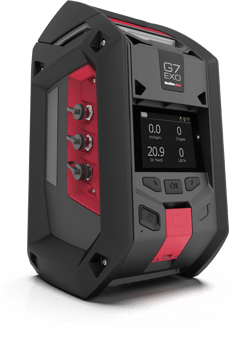POWERING DATA-DRIVEN SAFETY.
The importance of the petrochemical industry is often overlooked —but petrochemical products are all around us. From the production of chemicals, plastics, car components. gasoline, asphalt, synthetic rubber and fertilizer to name just a few, the petrochemical industry is booming and expected to grow at a CAGR of 6.2% from 2022 to 2030, rapidly approaching a USD 1 trillion market size.
There are significant hazards petrochemical workers may face that range from toxic gas exposure to confined space and the risk of fire or explosion from combustible gases. Particularly concerning is the safety of lone workers and potential gas exposures, such as:
- Combustible gases - like methane, butane, ethane, and propane
- Carbon monoxide (CO) - from the incomplete combustion of fossil fuels
- Sulfur dioxide (SO2) - is a byproduct of burning fossil fuels
- Nitrogen oxides (NOx) such as NO2
- Hydrogen sulfide (H2S) can be released during the drilling and extraction of oil and gas, along with refining and processing
- Chlorine (CI2) is used in the production of chemicals such as PVC
- Ammonia (NH3) - is used during the production of fertilizers and refrigerants
- Volatile organic compounds (VOCs) - like benzene - are present in many petrochemical products like solvents
Exposure to these gases can occur during the production, transportation, storage, and use of petrochemical products. It is important for workers to be trained on the hazards associated with these gases and stay protected by wearing PPE, including personal gas detectors.







